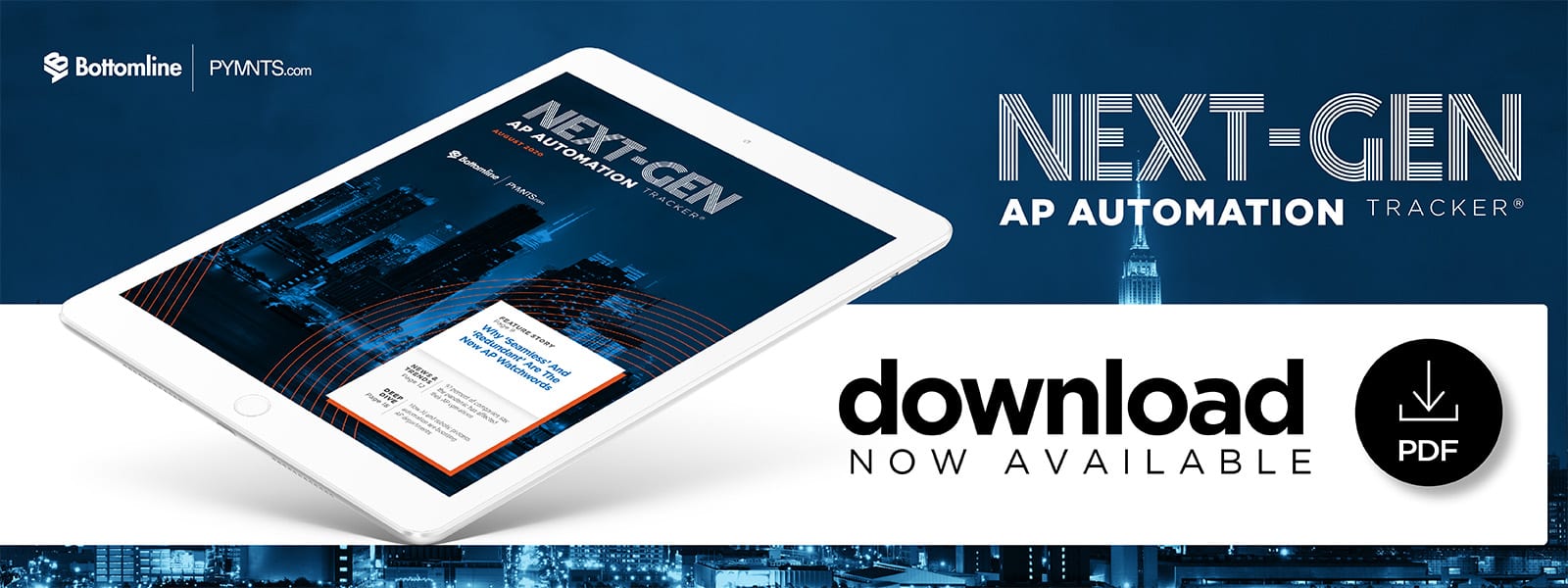Why ‘Seamless’ And ‘Redundant’ Are The New AP Watchwords

If there’s one big takeaway that has come out of the pandemic’s impact on businesses’ accounts payable operations, it’s that solely relying on manual, on-site processes can leave businesses flat-footed, TD Bank’s Neil McHugh says. In the Next-Gen AP Automation Tracker, McHugh explains corporates are using the cloud to make AP processes digital and resilient.
Businesses that have allowed “Upgrade AP” to languish on their to-do lists are now hurrying to automate as the COVID-19 pandemic has made legacy methods unsustainable. Some companies had structured their payment flows around the assumption that staff would always be able to go into the office, use specialized printers to issue paper checks and then mail them. The sudden health crisis and subsequent efforts to contain it have abruptly altered these plans, however, presenting companies with two challenges: safely sending employees into their offices and interacting with suppliers who are also operating remotely.
“Early in the pandemic, we heard many stories from customers where they had a bunch of checks sitting in their offices,” said Neil McHugh, head of commercial operating products in corporate products and services at TD Bank. “The mail was delivered, but no one was there to receive it.”
Firms are now taking the crisis as a wake-up call to adopt new business strategies and tools, McHugh explained in a recent PYMNTS interview. He added that these changes are likely to be long-lasting, too.
“I don’t think they’ll go back to the way it was before,” McHugh said. “We’re learning that the things companies have done in response [to the pandemic] are actually the right things that should have been done all along and will be [considered best practices] in the future.”
McHugh explained that these new tactics have caused businesses to shift toward more streamlined, digitized payment processes and led them to ensure their AP departments can withstand another major disruption.
Establishing A Plan B
The pandemic has thrown AP inefficiencies into sharp relief, and businesses are now taking steps to reexamine their approaches. Offices have become inaccessible for many organizations, and companies that relied on site-dependent processes are scrambling to switch gears so they can maintain smooth operations now and in the future.
“We have heard from customers that there is a heightened focus on redundancy,” McHugh said. “The pandemic has opened their eyes in many ways to what could happen. Companies that had continuity plans have had to enact them in ways they never had to before, or they realized that their plans did not include actions in a pandemic environment where they can’t go into the office or where physical components of their operations were not accessible.”
Businesses are thus determining whether the processes they have in place for everything from invoice receipt to payment approval to delivering funds are resistant to interruption and as streamlined and resilient as possible, McHugh said. Giving AP departments the flexibility they need to respond to unexpected events will continue to be critical, and organizations must ensure that they have backup plans in place should their primary strategies be disrupted.
Many businesses that had previously initiated their payments in-house are using third-party providers like banks to shoulder this responsibility during the current crisis, McHugh said. Companies will want to keep outsourcing options available going forward should future emergencies arise, too, as such redundancies can protect organizations against surprise interruptions.
Rebuilding Better
McHugh said businesses that are leveraging third parties to continue issuing payments are not merely trying to replicate older transaction methods, either. Corporate buyers have recognized that their suppliers are also undergoing serious changes and that they need to understand which payment types will suit vendors’ needs.
“The pandemic has caused a buying organization to really collaborate with the supplier,” McHugh said. “In the pandemic, the supplier may be impacted just like the buying organization is, so [the buyer might need to ask,] ‘If I can cut a check, can my suppliers accept it?’ There’s been more dialogue between trading partners.”
Buyers are, therefore, looking to be sensitive to vendors’ new realities while also making their operations more streamlined and accessible. Many companies are leaning on digital payment methods like virtual cards and ACH, while others may be adopting these tools for the first time.
“Most of the focus has been on the payment itself,” McHugh said. “Where organizations used to produce a check, they now need to originate an ACH transfer or they need to send that virtual card payment or establish a card that they can key into a website.”
Smaller businesses are especially likely to be making their first forays into digital payments. In contrast, the middle market and larger enterprises are looking for the seamlessness of low-contact payment flows. That latter case can involve firms having their enterprise resource planning (ERP) systems originate payments files and send those to their banks, which can then issue payments. ERP systems can thus streamline the transaction process.
Businesses that have been forced to adopt such AP changes are unlikely to find reasons to return to practices of old, McHugh predicted. Many of these updates would always have been important for companies to implement regardless — the pandemic hurried businesses along, he said. Organizations have been struggling with the pandemic’s impacts, but those that can pull through may emerge with stronger payments systems that will be more equipped to tackle setbacks in the future.
